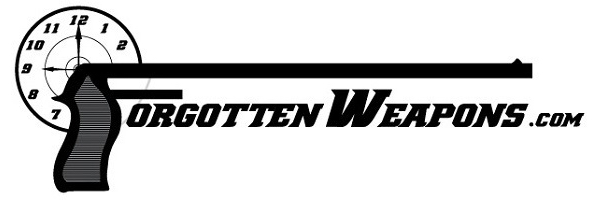When the German Tankgewehr was introduced in May 1918, the first 300 or so guns were of a different pattern than the standard production that would follow (and of which about 16,000 would be made). The Kurz model had a barrel about 4 inches shorter than the standard, and was about 2 pounds heavier, because that barrel (although shorter) was much larger in diameter than the standard pattern.
Related Articles

Forgotten History
Forgotten History: A German Bunker at Montfaucon
When one visits the Montfaucon American Monument (to the soldiers in the Meuse-Argonne offensive), one finds the road in flanked by a pair of (mostly) surviving German bunkers. These standing artifacts of 20th-century warfare are […]

Select-fire Rifles
Syrian Sturmgewehr Cache
Allah ackbar indeed! Why can’t I ever find a storeroom full of Sturmgewehrs? If anyone reading this has contacts in Syria,you might consider recommending that they try to exchange them on some international market for […]

Semiauto pistol
Walther PPKs on the Range: Comparing the .32 to the .380
Today I’m out at the range with three examples of Walther PPK pistols – one in .22 rimfire, one in .32 ACP, and one in .380 ACP. While the .22 is along for the comparison, […]

Awesome find! I don’t want to shoot one, but cool to behold!
I guess that suspenders are preferred when shooting one of these baby cannons.
This Kurz marking is puzzling. When was it applied?
It could not be when these rifles were first made. They could not be short if there is no long ones.
It only make sense to have been marked on those 300 first short rifles when the “standard” long rifles appeared.
But why those later ones were not designated Lange instead?
That’s confusing, but I am not German.
“(…)But why those later ones were not designated Lange instead?
That’s confusing, but I am not German.”
Maybe the late pattern was not considered “long” but rather “normal” and then if it is default there is not need to inform about that?
I wonder if the extra two pounds of mass would have noticeably offset the notorious kick of these guns.
Come on…
Not such a terrible recoil.
https://www.youtube.com/watch?v=_ovHGvT4f9k
I suspect that the change to the front of the spring flange on the firing pin, is similar to the same feature on Mauser 98 rifles.
The lugged attachment for the cocking piece caused stress concentration.
Some of the military drills involved a lot of dry firing, eventually resulting in fatigue fracturing of some firing pins at the cocking piece connection.
The shaped front matches with a slot at the front of the bore of the bolt – when the bolt is locked.
It will prevent the firing pin from reaching a primer, if the pin breaks before the bolt is locked.
It’s one of the many safety measures hidden in plain sight in the mauser 98.
Interestingly, the arisaka like cylinder style of firing pin in the steyr and obendorf prototype upgrades of the mauser 98, along with the Mukden Mauser, do away with the seperate cocking piece, and the cushioned firing pin blow and the stress concentrations that occur with the joint
And they also dispense with the out of battery safety system on the front end of the cylinder portion of the striker,
With the risks of the striker separating being greatly reduced, the cocking cam notch and cocking cam can adequately prevent out of battery firing